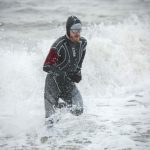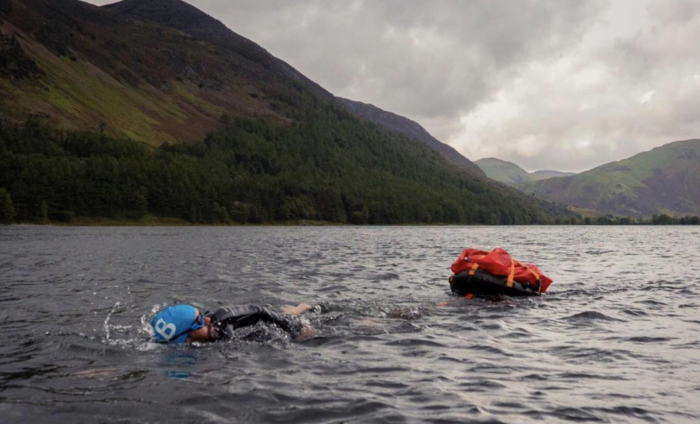
Croc-country swimming
A cross-country swimming adventure in the Lake District
After clipping my Crocs into a bundle of tow-floats, I make a final adjustment to the waist belts, and start to wade into the clear waters of the lake – only to be met by a barrage of mockery from my fellow swimmers. “They’re an insult to shoes,” “you look like a floating rag ‘n’ bone man” and “get a bloody move on”. I pretend not to hear and we all pull down our goggles, shallow dive into a squally Derwentwater and start heading down its western shore.
We are finally on our way. Four of us are on a cross-country swimming adventure, a multi-day day trek across the fells, lakes and tarns of the northern English Lake District, mixing swimming and hiking. The idea came about over a post-swim coffee one summer morning at south London’s Brockwell lido. Talk turned to the fact that while we all loved swimming in the Lakes, each of us had a yearning to devise an extended route combining classic swims and dips with challenging climbs. Gathered round a map, we mentally roamed over mountain, valley and blue patches, pointing out interesting and quirky features.
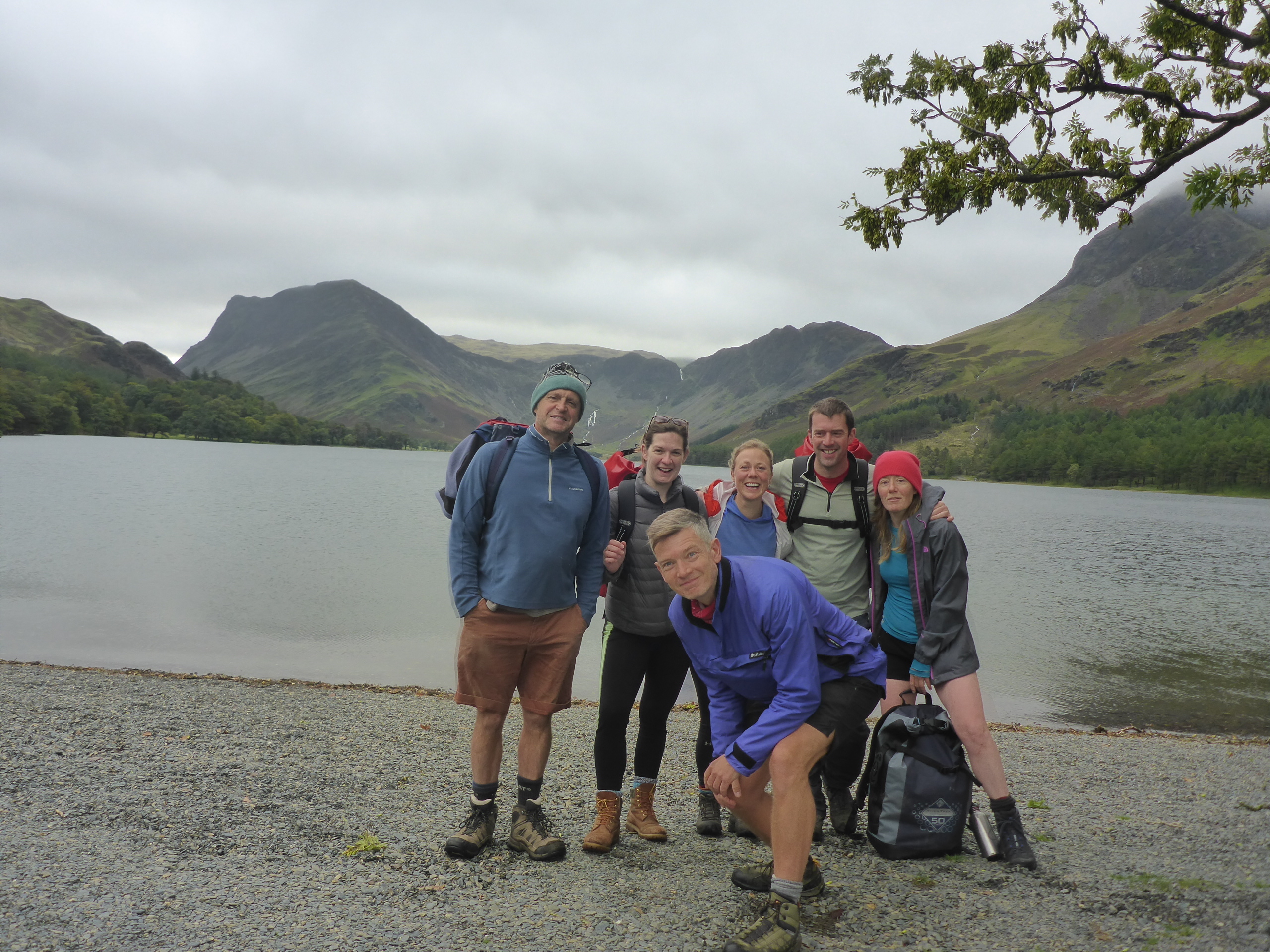
All the gear
Early enthusiasm for bivvying – wild camping using just a waterproof sleeping bag for cover – was soon abandoned in favour of staying in climbing-club huts, bothies and hostels. But there was still one major practical problem: how would we transport all our land-based gear of boots, sleeping bags, waterproofs and food across the water? The traditional tow-float is fine when all you need to take with you is a phone, dry clothes and a towel, but they’re just not big enough for lugging all the gear needed for a two-day trip. I managed to cobble together a mix of dry bags and floats, but the others were better equipped. Jo planned to pull a large waterproof rucksack with a long inflatable woggle strapped around it. Clunky, and a bit of a pain when swimming, she’d been assured this setup did the job. Emily and Andy though had both managed to bag a Ruckraft – a new piece of kit designed specifically with the swimmer/hiker in mind. Consisting of a large sealable waterproof bag that can easily accommodate a backpacking-sized rucksack, this is then strapped onto a small raft, ready to be towed. Rather irritatingly (to me and my three tow-float bags), it weighs under a kilo and packs down to the size of a large travel towel.
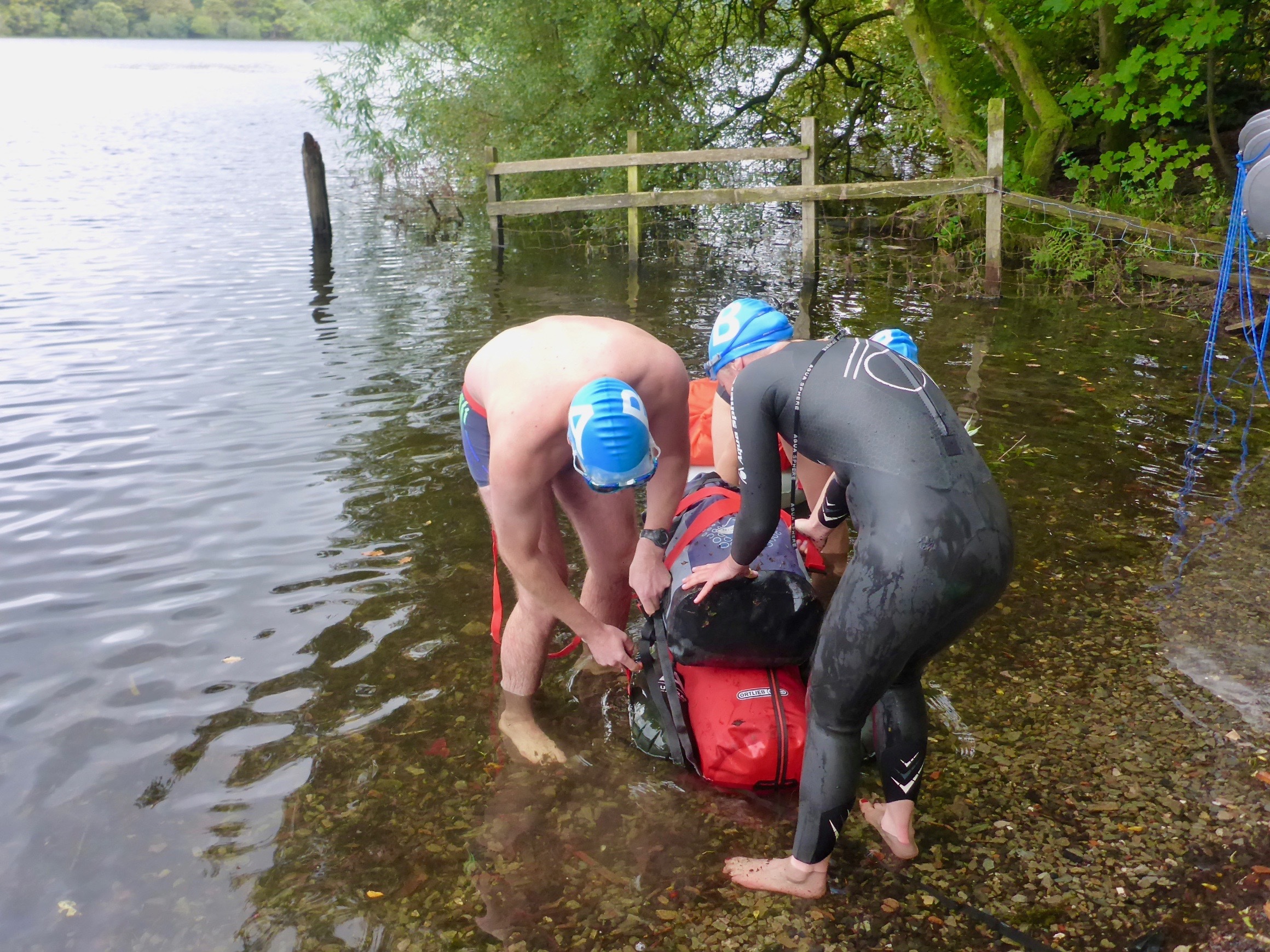
Cold-water high
It’s a grey, drizzly day in late September and we are ploughing through a choppy, but swimmable Derwentwater. The high fells are shrouded in cloud and it feels like we’re the only people on the water, but we’re relieved to be finally putting the plan into action. Twenty-five minutes or so later we emerge slightly battered but with that familiar cold-water high at a small bay near Lingholm, a restored old Victorian pile. On cue, the joshing begins again, not just about my beloved Crocs – arguably the best outdoor swimmer shoe – but the fact that I seem to be taking twice as long as the others to sort out my gear. Indeed I am, but I’ve got a lot of unpacking and re-stuffing to do. With their more efficient systems, the others are already dressed and scarpering off in search of a tea-shop while I’m still faffing around with dry bags.
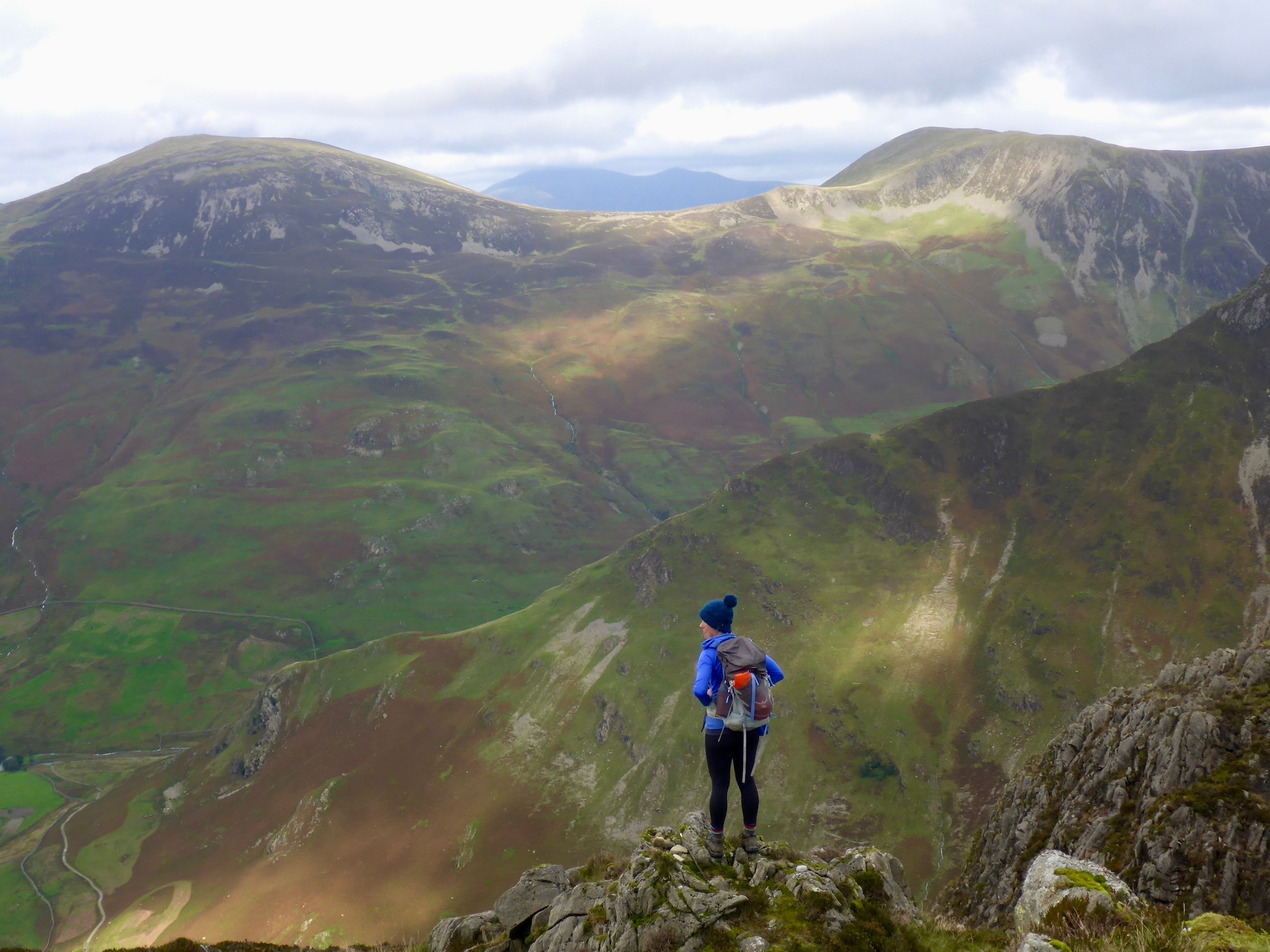
A magical evening
Reunited, we set off on the short, but sharp, steep climb up Catbells, a justifiably popular fell in part because of its spectacular views. As the clouds begin to clear, peak after peak is revealed, but my swimmer-eyes are constantly drawn to the lake below, imagining routes between the islands. We head down to the Newlands valley, once heavily mined, but now one of the quietest valleys in the Lakes. Beatrix Potter set a number of her stories here, but the cultural reference that gets us most excited is when Andy spots a red post van gently winding its way down a lane – a pure Postman Pat moment. An hour or so later we arrive at an old farm building, now a climbing hut, and home for the night. Fire and food need to be prepared, but instead rucksacks are dumped and we run straight down to the local stream for a late afternoon dousing. A magical evening is spent sitting round the coal fire, sipping whisky, while all around us flickering gaslights send a warm, golden glow across the ancient stone walls.
The next day, steep climbs are broken up with tarn dips and messing around in freezing waterfalls – all part of the original plan to grab swims whenever the urge takes us. Working our way up to the summit of Dale Head, we discuss the endless permutations of extended cross-country swimming routes. While wild camping opens all sorts of possibilities, we notice that there are several bunkhouses and climbing huts scattered across the wilder parts of the Lakes. There are even a few bothies including two above the Buttermere valley. We seek out one of them, Warnscale Head, a tiny old miner’s shelter that can sleep four at a push.
After firing up the stove for a coffee, I look down from the small window on the stunning view of Buttermere and Crummock Waters stretching seductively into the distance. It’s a siren call and keen to get swimming again, we race down the fellside to the shore of the former. My unpacking/packing routine is speeding up, but the Ruckraft crew are still beating me into the water. Our pod moves up Buttermere with Emily leading the way, her raft the perfect object to sight on. This glorious swim is followed by the 20-minute walk to Crummock Water where we dive off small rocky islands before embarking on the lake crossing. Meeting up with friends at the local YHA, we retire to the pub for a welcome pint and the inevitable swim chat. Some round off the night with a cheeky lake dip.
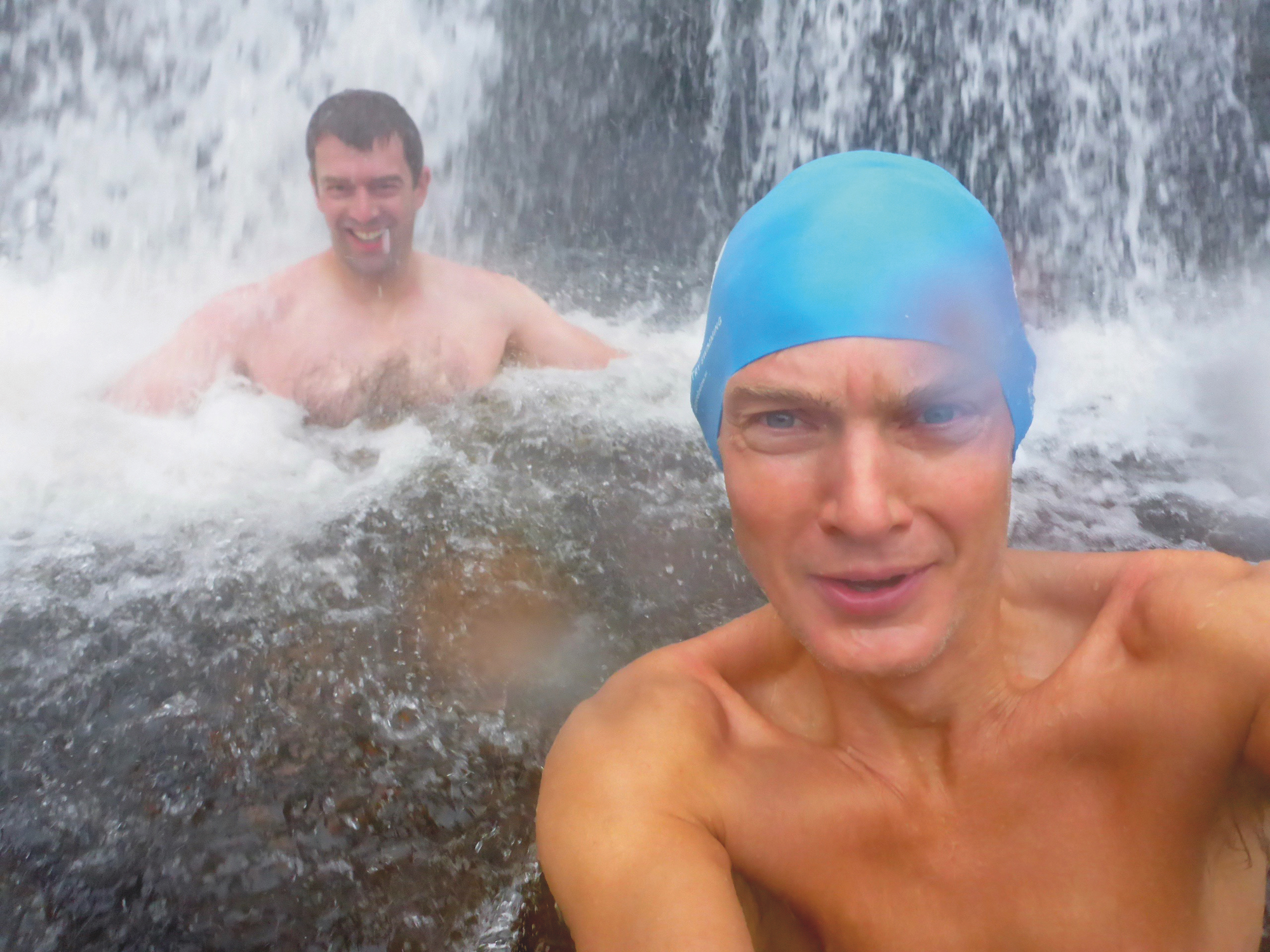
Tarnbagging
The next day is spent exploring more lakes as well as a spot of tarnbagging – the sport of collecting high-level small lakes. The climb up to Bleaberry Tarn is almost Alpine in its steepness with our goal hidden until the last moment. Once spotted though, it’s hard to disagree with old Lakeland sage, Alfred Wainwright’s observation that, “A better one could not be devised.” With the massive Chapel crags looming behind the dark cold waters, it makes for an intimidating swim. On the final high-level trek back to Keswick we are rewarded with clear skies but a band of heavy rain descends as Derwentwater comes into view.
There’s a determination to finish the route with a big swim back across the lake but, with the wind whipping up white caps, we make the sensible decision to cut it short by heading for a shoreside mobile home park. As we wade into land, a flotilla of brightly coloured floats, Ruckrafts – and Crocs – trailing behind us, curtains begin a-twitching while dogs suddenly start barking. We just burst out laughing though and as we get changed in the pouring rain, there’s a relief that we seem to have cracked this cross-country swimming business. Lessons have been learned and we’re already making plans for more adventurous epic cross-country swimming trips.
Try it yourself:
Swimming in the Lake District (and the few places where you can’t swim)
Climbing club huts
Some clubs allow non-members to use their huts. See: thebmc.co.uk/organisations/huts
The Tarns of Lakeland by John and Anne Nuttall, Cicerone, 1995
Two volume guide to walks linking tarns.








